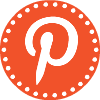My bright idea began with wanting to help the students in my school be better organized as they read nonfiction texts in order to conduct research about a specific topic. One of the ways I introduced to my teachers (as an instructional coach) to help their students is through an expanded KWL chart.
Many of the students were already familiar with a KWL charts, but I wanted to make sure we were all on the same page. I had my teachers introduce (in preschool) and review (in kindergarten through third grades) the basic KWL chart.
One of the preschool teachers took the KWL chart and made it work for students in a couple of ways. She had "Today we are going to read about ______" already on the chart along with the green question (What do you know about girafffes) and the blue question (What do you wonder about giraffes). She showed them the Giraffes book (LOVE the cover...talk about grabbing students' interests) and had them share what they thought they knew about giraffes while she wrote a few on the chart. Then she told them to think about what they wanted to know - what they wondered about giraffes. They are four years old and struggle with asking questions, so she gave them some stems to help them out.
I have one teacher who teaches a combined kinder and first grade class. She made the KWL chart her own also. She went through the same process but with a book about seeds. They completed the whole thing as a class.
One of my third grade teachers chose to put each part of the KWL on a different piece of small chart paper and used bulletin board letters to put "know, wonder, learn." In third grade, students are more independent and each student wrote on a sticky note what they knew and wondered before the book was read. Then they came to the front of the room and put the sticky notes on the chart. After the teacher read multiple excerpts about Abe Lincoln. they put what they learned.
Let me stop a minute and talk about the LEARN category. Students are not just putting random facts they learned after the book is read. Students are putting information that MATCHES their WONDER questions in the learn column. The whole point of this chart is to help students organize their research about a topic, so any random fact will not help with the research. The students have a purpose for listening/reading because of their SELF-GENERATED questions. They are more MOTIVATED to listen/read because they want to know something about the topic.
Now, here comes the expanded portion.
Expanded KWL
Students are moving their wonder questions to the learn column if their question is answered during the reading. Students are also moving the information in the KNOW column to two new columns: CONFIRM and MISTAKEN. After the reading, students reexamine what they thought they knew and decided if it was: CONFIRMED (text gave evidence that what they wrote down was true) or MISTAKEN (text gave evidence that what they thought they knew was incorrect). If the know sticky note could not be confirmed or denied, then it stayed in the know column.
All of my teachers, except the preschool, added cofirmed and mistaken to their KWL charts. One of my third grade teachers thought the two categories were best put under the know column (like you see above). One of my first grade teachers put the confirm column after the know and the mistaken after the learn (like in the picture below).
Next up on the Bright Ideas blog hop is Julie from Second Grade Style. She has a wonderful post on tips for keeping a clean classroom. Just click on the button below to check it out!
More Bright Ideas for K-2:
The collection has closed. Let other people know about it through twitter.
More Bright Ideas for Grade 3 and up:
The collection has closed. Let other people know about it through twitter.













































